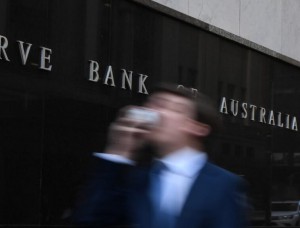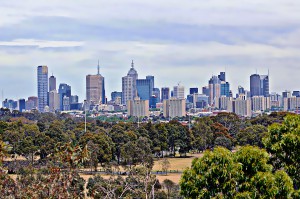There are more interesting articles, commentaries and analyst reports on the Web every week than anyone could read in a month.
Each Saturday morning I like to share some of the ones I’ve read during the week.
The weekend will be over before you know it, so enjoy some weekend reading.
Why Australia’s latest housing credit data points to further price declines ahead, in one chart
It would seem that all the numbers lead to a further price decline forecast.
According to an article on Business Insider Australia’s latest housing credit data indicates a further price decline.
Growth in Australian housing credit continues to slow, especially to investors.
According to data released by the Reserve Bank of Australia (RBA), the outstanding value of housing loans grew by just 0.3% in seasonally adjusted terms, leaving the change on a year earlier at 5.6%, the weakest increase since early 2014.
The continued moderation reflected that credit to housing investors actually contracted over the month, falling 0.1%, the first decline since February 2009.
That was peak GFC territory.
Over the year, investor credit growth slowed to 1.6%, the weakest increase on record.
In contrast, credit to owner-occupiers grew by 7.8%, but that too was down from the recent cyclical peak of 8.1% seen earlier this year.
This investor-led slowdown, largely reflecting the impact of tighter lending standards, has already left its mark, seeing home prices in Sydney and Melbourne — two markets previously favoured by investors — decline over the past year.
Based on the chart below from ANZ Bank, there could well be further falls to come.
ANZ Bank
It shows ANZ’s housing credit impulse — measuring the speed of the change in housing credit growth — overlaid against the annual change in Australia’s median home price, according to CoreLogic data.
The former is still accelerating lower, something ANZ says points to further price weakness ahead.
“The data show that the housing credit impulse continued its downward trend [in June],” it said.
“As long as this remains the case, housing prices are likely to keep falling, which is what we expect.”
Read the full article here
Melbourne land price rises another 41 per cent
Land prices continue to rise in Melbourne.
This Blog by Pete Wargent looks at the statistics.
Melbournites don’t wait to buy land
Melbourne’s median lot value increased by another 41 per cent year-on-year to a record $359,000, according to HIA figures.
That’s up from just above $200,000 five years ago.
In Sydney the median lot value sits just below its peak at $469,500.
Read the full article here
Apartments in Melbourne’s inner-city are selling at a loss, agents say
With there being no shortage of rising apartment is Melbourne, it look like the sales are starting to fall in price.
An article on Domain.com.au look at why apartments are now selling at a loss.
Inner Melbourne apartment owners should be prepared to cop up to a $100,000 loss in order to sell, experts say, as prices stagnate or slide in many popular suburbs.
The median unit price in Collingwood has dropped 4.3 per cent in the past five years, while nearby Abbotsford recorded a 5.1 per cent fall, according to new data.
Experts say the construction cycle has reached its peak, as the median unit price in inner city suburbs drops.
In stark comparison, the apartment market in Melbourne’s middle to outer suburbs has shot up in value, propped up by population growth and the popularity of boutique, medium-density blocks geared towards young professionals and downsizers.
Suburb Median Unit Yearly change 5 yearly change Collingwood $499,000 -8.70% -4.30% Abbotsford $496,000 -8.50% -5.10% Fitzroy $635,000 -7.30% 14.9% Richmond $530,000 -1.80% -0.40% Brunswick $470,000 -2% 6.80% Southbank $558,000 -1% -0.80% Parkville $499,000 -6.40% 4.60% West Footscray $365,000 -3.20% -2.70% Docklands $590,000 -1.20% 1.70% St Albans $410,000 24.20% 48.00% Ivanhoe $685,000 21.20% 35.60% Carrum Downs $420,000 20.90% 41.60% Noble Park $434,500 20% 39.30% Clayton South $480,000 20% 26.00% Caulfield North $628,000 16.70% 20.50% Reservoir $501,000 16.30% 56.50% Hampton $840,000 13.50% 50% Frankston $407,000 16.30% 56% Glen Iris $627,000 13% 31.30% The median unit price in Ivanhoe, Carrum Downs, Clayton South and St Albans has soared 20 per cent since mid-2017.
But the weakening inner-city market means investors and apartment owners are being forced to sell for less than they paid just a few years ago.
“The biggest issue with off-the-plan is people paid too much. That’s why they’re harder to resell,” Biggin and Scott Richmond agent Talia Besser said.
“The one-bedroom apartments, the valuations are telling owners to maybe expect a $50,000 loss and a two-bedroom maybe a $100,000 loss.”
Real estate firm JLL’s research director Annabel McFarlane said demand in the inner suburbs was strong enough to maintain prices, but there were other factors at play.
“The supply pipeline is not the problem — it’s the banks and the funding. They’ve been asked to moderate their lending to investors,” she said.
Ms McFarlane said off-the-plan apartments often lost value when they hit the market as a “second-hand” product.
“It depends on the block and where it is [but] there will sometimes be a little bit of a correction, particularly if there was a stamp duty saving.”
According to a recent JLL report, 6550 apartments will be finished this year, down from 10,400 last year, with the majority located around the city centre.
Ms Besser said apartment owners were being caught by surprise when discovering their property was worth less than they paid for it.
“If you’re unreasonable and you don’t accept that potential loss, then your property won’t sell,” she said.
Nelson Alexander Brunswick agent and auctioneer Jonathan West said properties could sit on the market for 12 months if vendors were holding out for the apartment prices fetched last year.
Some were choosing to rent out their apartment instead of selling, he added.
“The rental returns are probably better than bank interest [but] in terms of capital growth there’s not much there.”
Ms Besser said boutique apartments attracted stronger demand than cheaper, larger unit developments.
“Art deco and the boutique blocks are the ones that are highly sought-after and the ’70s blocks are doing well if they’ve been refurbished.”Other outer suburbs that have seen strong price growth over the past five years include Boronia (58.7 per cent),Frankston(56.5 per cent) and Chelsea (56.3 per cent).
Read the full article here
Big city income, small town lifestyle
While sea changes and tree changes used to be a retirement plan – figures show the move is now much earlier.
In this article for Switzer, John McGrath looks at what’s going on.
We’re hearing a lot about young families departing big cities for regional towns, largely in NSW and VIC which is typical at the end of market booms.
House prices grow too much and families decide to quit the city and go elsewhere for a seachange and a more affordable mortgage.
However, it seems that the ‘city escape’ is becoming much more to do with lifestyle than house prices.
This is interesting because Australians have always loved living in capital cities – in fact, just under 70% of our entire population lives in these eight locations alone.
However, families moving to regional markets are talking a lot more about wanting an easier life.
In regional areas, they can have more time with their kids because work, school and home are 10 minutes apart.
They want to go to the shops, park outside the door and not have to line up in queues.
Cheaper housing is also a benefit but it’s no longer the main reason to move, it seems.
Population growth is no doubt contributing to the greater hustle and bustle of city life.
You might have heard recently that Australia’s population is due to hit the 25 million mark next month – about 30 years too early based on projections published by the Bureau of Statistics in 1998.
Given most of us live in capital cities, that’s where we’re feeling this population growth most.
It’s understandable that some people are feeling too crammed in and need a change of pace.
Many people would say that ‘moving to the country’ sounds nice but isn’t very realistic, mainly because it’s harder to get a job with a decent salary.
But is that perception or reality?
New data just released on personal employee incomes indicates that blue collar workers and their families are the best positioned to leave Sydney or Melbourne without taking too much of a pay cut, as long as they don’t venture too far afield.
Here’s the big picture, using NSW and VIC as our examples…
NSW – city versus regional income averages
Average income Greater Sydney: $66,172
Average income Rest of NSW: $52,872
VIC – city versus regional income averages
Average income Greater Melbourne: $59,573
Average income Rest of VIC: $49,379
So, generally speaking, people living outside Sydney and Melbourne earn quite a bit less – about $13,000 in the case of regional NSW and $10,000 in the case of regional VIC.
Drill down further though and you’ll discover that the larger regional areas with closer proximity to the capitals offer very competitive incomes in exchange for a better lifestyle.
Take Sydney for example, where the average salary is $66,000. About 90 minutes south is the Illawarra, where the average salary is $59,000 – a bit below Sydney but well above the ‘rest of state’ average. About two hours north is Newcastle/Lake Macquarie, where the average salary is $58,000.
You can see in the statistics below that the further you move away from a capital, the greater the income disparity.
This is because regional areas closer to capitals tend to be thriving cities in their own right, with strong and growing local economies and a broader range of employment options.
NSW – Top 6 areas outside Sydney for income
- Illawarra $59,182
- Hunter Valley (excluding Newcastle) $59,015
- Newcastle/Lake Macquarie $58,064
- Capital Region (Goulburn, Far South Coast) $54,726
- Central Coast $54,428
- Central West (Lithgow, Orange, Parkes) $53,330
VIC – Top 6 areas outside Melbourne for income
- Morning Peninsula $54,055
- Geelong $53,849
- Latrobe-Gippsland $51,633
- Bendigo $50,352
- Ballarat $50,008
- Hume (Wodonga, Wangaratta, Seymour) $47,998
Now, here are the stats that will really surprise you.
We went through occupational data for people aged 35-54, which is the typical age of families; and found that some blue collar jobs paid just as much and even more in regional areas
compared to cities in both NSW and VIC.
For example, labourers aged 35-44 in Sydney earn an average $47,031.
In regional NSW, they earn $46,744.
Technicians aged 45-54 in Sydney earn $71,476 compared to $71,991 in regional NSW.
Machinery operators and drivers in regional areas can earn more than their city counterparts.
An employee aged 35-44 in Sydney earns $62,120 per year. In regional NSW, they earn $81,136.
Read the full article here
2018 Houses Awards: Australian House of the Year
The winner has been announced!
An articles on Architectureau.com looks at which house landed the title ‘Australian House of the Year’.
Australian House of the Year
Cabbage Tree House by Peter Stutchbury Architecture
2018 Houses Awards
Cabbage Tree House by Peter Stutchbury Architecture.
Jury comment
The Cabbage Tree House is a remarkable, complete Australian house that authentically and poetically embraces its landscape setting on Sydney’s northern beaches.
Anchored in a rock shelf, the masonry structure leans back into the hillside as a “physical manifesto of the character of its place.
”Internally, the home has cave-like qualities.
It is a sanctuary away from city life and is connected to the landscape.
The scale of the building is broken down into smaller spaces of retreat and seclusion – all with views into vast bushland.
Exposed concrete, steel and brickwork give the impression of permanence and longevity, as well as having thermal mass benefits.
The home is intended for comfort in all seasons: it captures cool breezes from the east in summer and is splayed to the north toward the winter sun.
Although this house is undeniably an impressive piece of architecture, it has the warmth, layers and inhabitation of a welcoming home.
Every design detail is considered – from the circular skylights that give glimpses of blue skies above to the handcrafted timber handrail on the stair.
It is a house through which one can reconnect with nature – not as a museum piece, but as a home to be lived in.
This home is the Australian House of the Year for its timeless qualities, impressive sculptural forms and connection to place.
Read the full article here












No comments:
Post a Comment